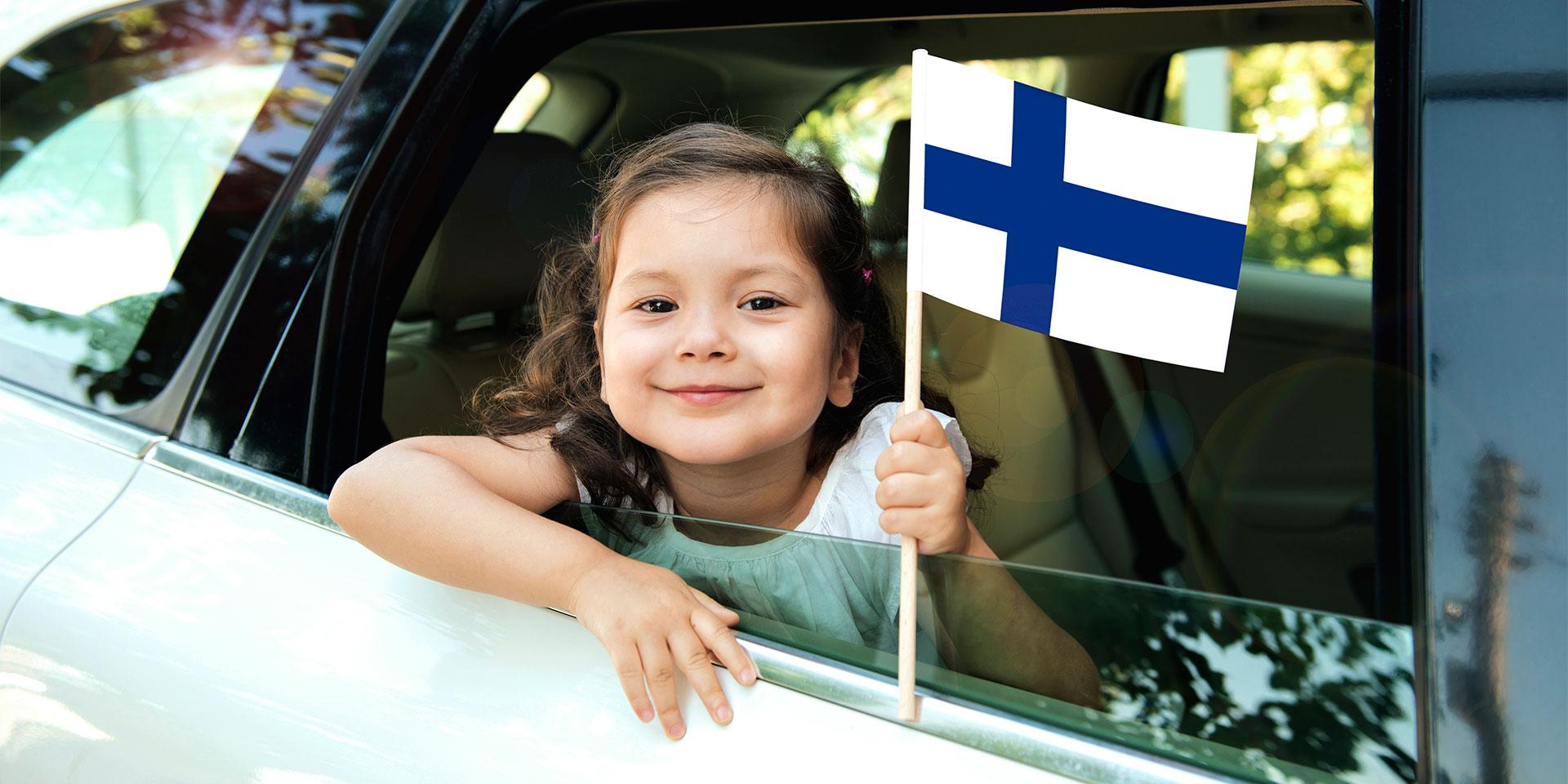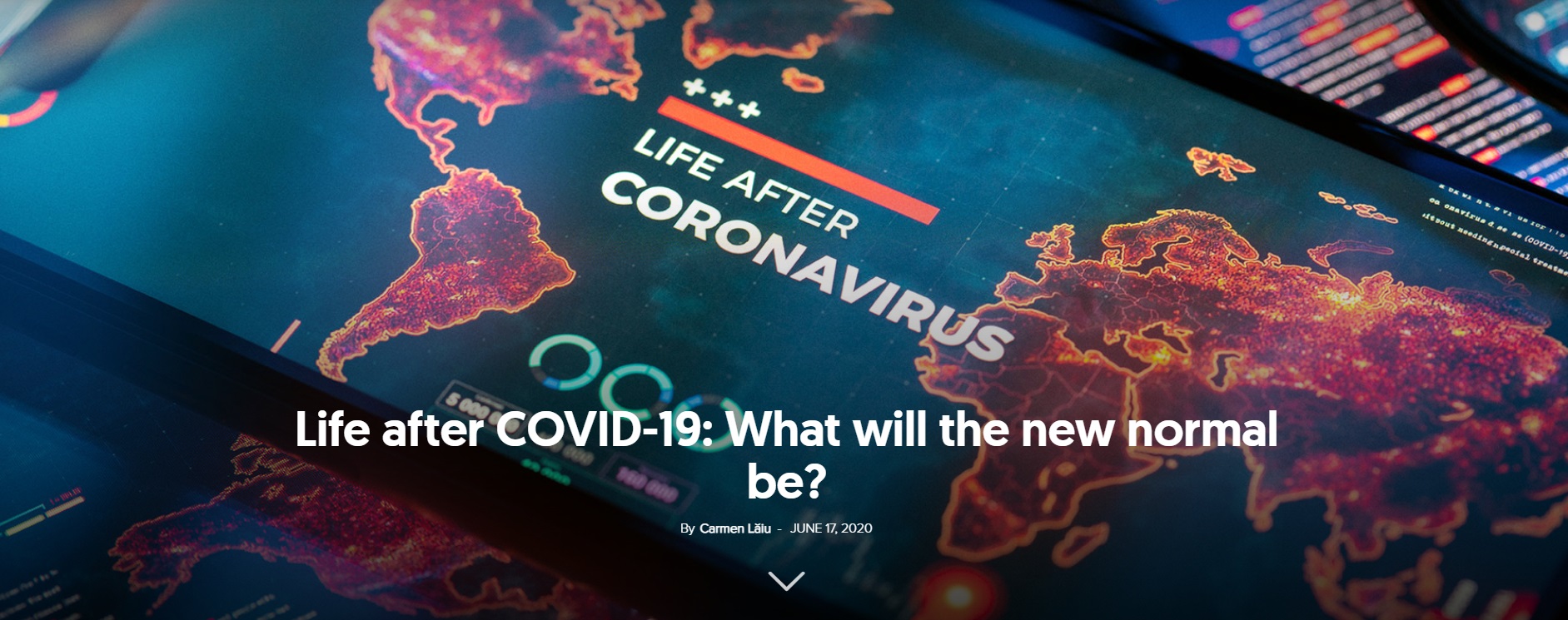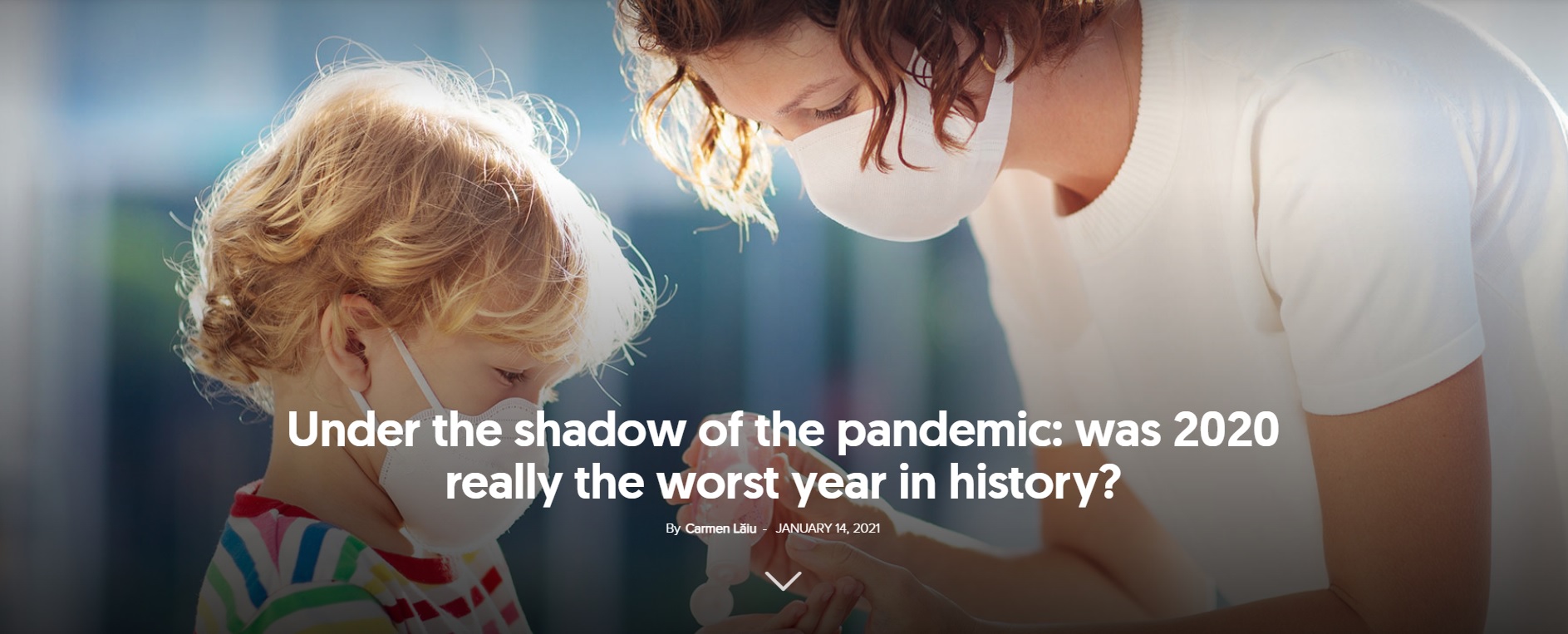“How can we rejoice if we’re at war?” This was one of the questions that arose in my mind after reading a book comprised of testimonies of people who experienced World War II as children. Decades after this nightmare, and stricken by a crisis that casts its shadow over people and nations everywhere, the question remains: can we still be happy in times of trouble?
The short, unnuanced answer is that we can be happy, and there is a high probability that we will experience the same level of happiness or unhappiness we experienced before the pandemic. This is a conclusion that can be drawn for many of the countries around the world, according to the latest World Happiness Report sponsored by the UN. The study has been published every year starting in 2012 and uses, in addition to the perceptions of happiness of the citizens of each nation, criteria like the GDP per capita, life expectancy, freedom, social support, generosity and the way in which corruption at a governmental level and in the business environment is perceived.
Interestingly, Finland retains its title of “happiest country in the world” for the fourth year in a row. The Nordic countries continue to occupy the top spots in this happiness ranking, which retains a composition close to that of previous years, despite the global health crisis and its effects at an economic, social and political level.
Why are North-Europeans happier than others?
There is no single well-kept secret owned by the countries in Northern Europe to increase their citizens’ level of happiness, but there is definitely a general recipe that could serve as inspiration for other countries. This is the conclusion drawn by the authors of the previous World Happiness Report that analyse a series of factors responsible for the North Europeans’ high happiness index.
Although it has often been suggested that it’s easier to build welfare societies in places where the population is relatively homogenous and small, in reality, this is a myth, researchers say. Even in countries with a small population, one cannot talk about ethnic homogeneity. Countries in Northern Europe are rather ethnically heterogeneous. In Sweden, for instance, about 19% of the inhabitants are born outside the country. Some researchers believe that trust in others (an element that significantly changes a population’s happiness index) is lower when we live with people who are different from us. But this belief is contradicted by Professor Eric Uslaner from the University of Maryland.
His research has shown that not only does residential segregation lead to a lower level of trust than diversity does, but also that efficient immigration and integration policies for minorities strengthen trust and social relations.
Ethnic heterogeneity does not significantly affect the trust the members of a society have in each other. The most significant factor that shapes this trust is the way in which institutions function (the impartial distribution of jobs and eliminating corruption), according to a study published in 2018.
Good governance is associated with a higher level of happiness, diminishing, at the same time, the happiness inequality among citizens, according to a study conducted in 2011. It was discovered that, when it comes to the good functioning of state institutions, the Nordic countries occupy the top places together with countries like New Zealand and Switzerland.
A study conducted by researchers Jan Delhey and Georgi Dragolov showed that a high level of social cohesion (with its three dimensions—interconnectivity, good social relations and focusing on the common good) is associated with a high degree of welfare. Out of the 27 countries in the E.U. that were analysed, Denmark, Finland and Sweden occupy the first three places when it comes to social adhesion, one of the factors explaining the happiness of the inhabitants of the Nordic countries.
The degree to which society allows freedom of choice has a major impact on its citizens’ happiness. This feeling of freedom is born at the intersection between three factors, according to researcher Ronald Inglehart: material prosperity that sets people free from scarcity constraints, democratic institutions that allows freedom from political oppression, and cultural values that give people more room to express their identity.
The countries in Northern Europe represent, in Inglehart’s opinion, “the best example of successful modernization, prosperity maximization, social solidarity and political and personal freedom.”
Economic prosperity is just one of the mosaic of ingredients that have propelled the countries in Northern Europe to the top of the happiness ranking. Commenting on the leap in this ranking made by Finland in 2018 (from 5th place to first), Meik Wiking, from the Happiness Research Institute in Denmark, observed that the country’s GDP per capita is lower than that of neighbouring Nordic countries and smaller than that of the United States.
Pandemic management and happiness
Although it would have been expected that most states would register a decline in happiness due to the pandemic, in reality, the overall ranking remained quite similar to the previous year. Regarding this surprising fact professor John Helliwell, one of the authors of the report, advances the following possible explanation: COVID-19 was perceived as a “common, outside threat affecting everybody and…this has generated a greater sense of solidarity and fellow-feeling.”
The differences that occurred between states when it comes to the success of health crisis management have been determined by a series of factors, including geographical and demographical ones. However, cultural factors played a key role in the development of the situation, the authors of the report say. Therefore, trust in public institutions, the experience gained during previous pandemics, and income equality made a real difference in the management of the pandemic. Also, trust in one’s fellow man and having a woman lead the government have positively influenced the management of the crisis.
Death rates varied in different parts of the world. The number of deaths in America and Europe has surpassed by far those registered in East Asia, Australia and Africa.
From East Asia’s experience we learn that stricter governmental policies lead to a better control of COVID-19, softening, at the same time, the negative impact of new infection cases on the happiness of the population, says professor Shun Wang, one of the authors of the study.
Great Britain went down 5 places in the global happiness ranking (from 13th to 18th place). The pandemic significantly affected the mental health of the British. The number of mental health disorders reported within this population was 47% higher in 2020 than before the pandemic.
Although the previous year was a tough one for most people, the decline in happiness of the British was abrupt, says Mark Williamson, the executive director of Action for Happiness, stressing that political decision factors should aim for the re-establishment of the feeling of welfare as they succeed in better controlling the pandemic. The report shows how important trust and empathy are within a community, and what we should learn is that “not only do these things make us happier, but when it comes to COVID, they can save lives,” Williamson says.
A lesson on happiness and trust
For the fourth year in a row, Finland leads the global happiness ranking, followed by Denmark, Switzerland, Iceland, the Netherlands, Sweden, Luxemburg and New Zealand.
The fact that Finland maintained its leading position is not a surprise, experts say. The country constantly occupies “a leading position in terms of mutual trust measures that have helped to protect lives and communities during the pandemic.”
At the end of last year, an analysis by Deutsche Welle showed that Finland has dealt very well with the coronavirus crisis, a model people do not talk enough about like they did about the Swedish model.
In mid-November Finland had under 20,000 COVID-19 cases (in comparison, Denmark and Slovakia had 25,000 more, with a total of 70,000 more deaths, the three states having an almost equal number of inhabitants), while Sweden, with a population twice as large as Finland, had almost 10 times more infections.
Currently, less than 1.4% of the country’s population has been diagnosed with COVID-19 (taking into account that regular testing is an important strategy to control the pandemic), and approximately 1% of the infected people passed away.
It was not luck, but a very prompt reaction to the pandemic: in spring, the country introduced a series of restrictions, two weeks earlier than other Scandinavian countries, says Mika Salminen, director of the Finish Institute for Health and Welfare (THL).
Confidence in the actions of the Finish government was maintained at a high level during the pandemic and little opposition was expressed towards the adopted anti-epidemic measures.
An important factor in strengthening the population’s trust was communication: weekly, the prime minister and other officials offered clear information about the crisis and answered questions during press conferences. There even was a press conference where children’s questions were answered.
Trust in governmental decisions preceded the pandemic, and the relative robustness of the Finnish economy (the economic production of the country dropped 6.4% compared to the 14% average in the E.U.) contributed to the preservation of this trust. Also, the high digitalization level of the country eased the transition towards online schooling and working from home.
The Finnish tendency towards solitude also contributed to a better management of the pandemic. Almost a quarter of Finnish people declared that the lockdown from the beginning of last spring improved their lives. The distancing measure were easy to implement seeing that 75% of the population met, on average, 2.5 people per day, according to a survey conducted in April 2020.
“We are not very sociable and we prefer to be alone,” says Nelli Hankonen, social psychologist form the Helsinki University.
At the same time, the concern for members of vulnerable groups led to the setting up of volunteer groups who bought medicines and basic provisions for people at risk.
The appetite for loneliness does not seem to go well with happiness. Yet, the Finnish are the happiest people on earth, proof that the members of the community are not only concerned with their own needs and interests.
This type of happiness cannot be measured by the degree to which people express positive emotions. In fact, if we were to evaluate the “smile factor” we would not get spectacular results, says Professor John Helliwell in last year’s report, explaining that Finnish people trust one another, are preoccupied with the common welfare and “that’s what fundamentally makes for a better life.”
In a society built on trust, during a crisis people find ways to cooperate and reduce the damage experienced, and this willingness to cooperate, which exists at an individual and institutional level, increases the feeling of belonging and leads to a higher level of happiness—even when following an event which could be deemed a true disaster, say the authors of the World Happiness Report in 2020.
After one year of pandemic, the researchers’ conclusion is that the happiest countries are those in which “people have a sense of belonging, [in which] they trust and appreciate each other.”
“Spread kindness, not rumors” was one of the messages conveyed during the pandemic by Siwon Choi, Regional Ambassador of UNICEF for Eastern Asia and the Pacific. This could be an excellent motto for a year that promises to be full of challenges.
Carmen Lăiu is a writer for ST Network and Semnele timpului.





















